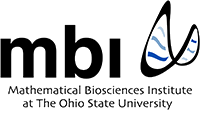Abstract
Shape analysis of objects intrinsically involves registration of points across objects. While registration is historically treated as a pre-processing step, a more recent trend is to incorporate it as an integral step in shape comparison. There are two distinct approaches for shape registration -- model based and metric based.
(1) In the first case, one assumes a model upfront that is generally of the type: observation = deformed template & noise.
The goal then is to estimate the template and individual deformations given multiple observations.
(2) The second approach does not start with a model but uses a metric that forms an objective function for both: registration of points across objects and quantification of difference in shapes. This metric facilitates a consistent framework where registration and ensuing shape analysis (summarization, modes of variations, etc) are all performed under the same metric (and not as either pre- and/or post-processing).
It is the second approach that I will elaborate upon in this talk. The key property of valid metrics for registration is that the re-parameterization group acts by isometries under this metric. While such metrics are beginning to emerge for shape analysis of curves, surfaces, and even images, they are often too difficult to allow efficient solutions. In some cases a simple change of variable converts these invariant metrics into standard Euclidean metrics, the classical computational solutions apply.
Examples include square-root velocity functions for curves and square-root normal fields for surfaces.
I will demonstrate these ideas using different types of objects: curves in Euclidean spaces, trajectories on Riemannian manifolds, 2D surfaces, and vector-valued images.
